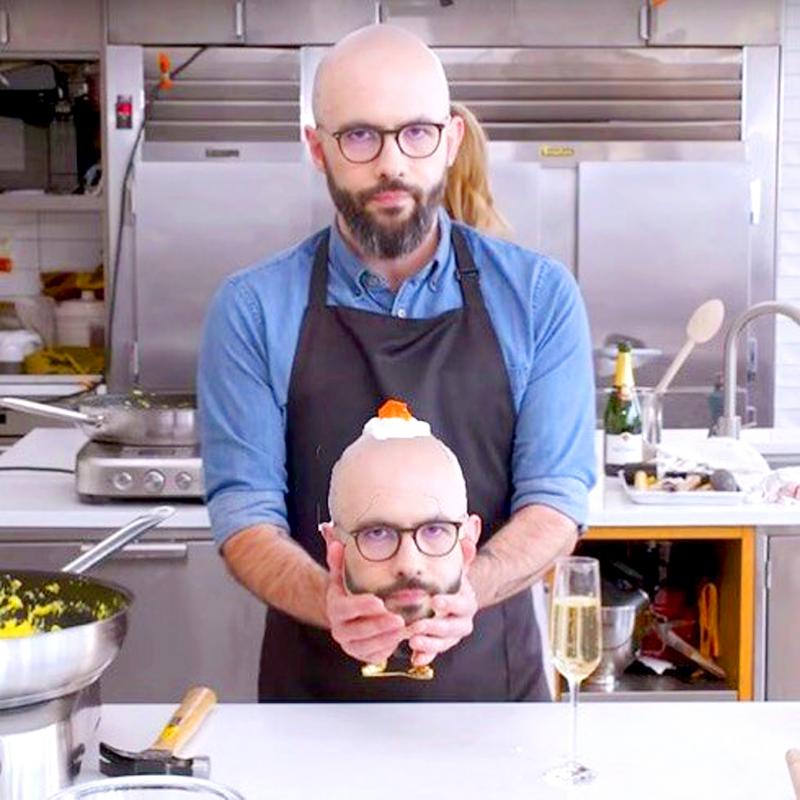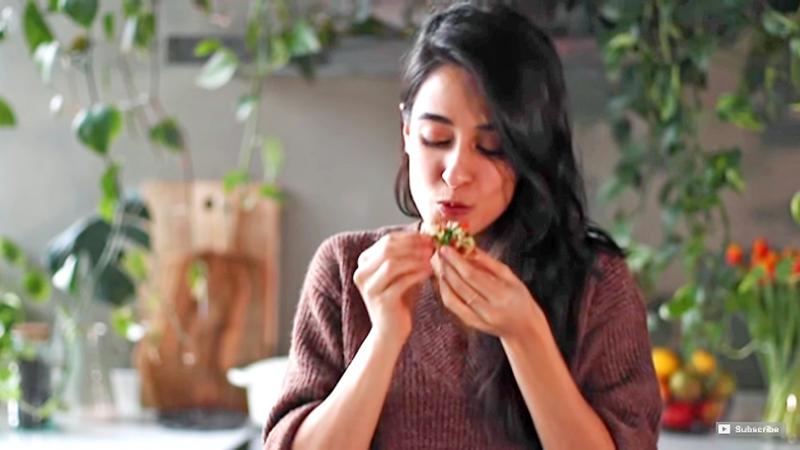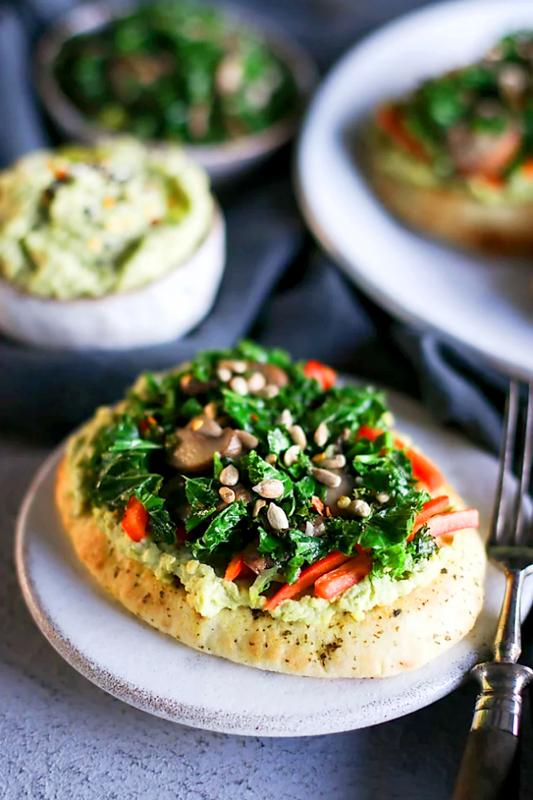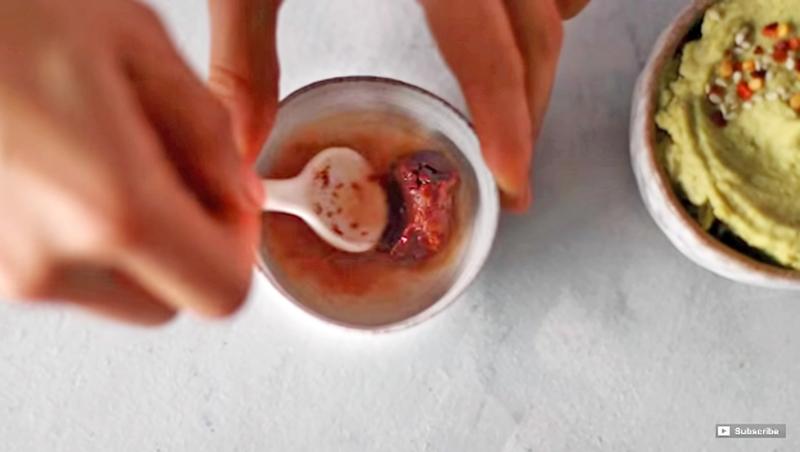As the world locks down, supermarket shelves are stripped, restaurants are forced to close and home delivery services such as Postmates and Deliveroo become stretched, it’s increasingly infeasible to weather the coronavirus storm in isolation without picking up some rudimentary cooking skills.
Thankfully, YouTube is there. Average daily views on videos with “cook with me” in the title have more than doubled since Wednesday, compared with their average views previously, according to YouTube. In the past year, cooking videos have been viewed more than 20 billion times, say Tubular Labs, an analytics agency. Whether you’re a novice new to tongs or comfortable with a mandolin (watch those fingers!), these are the channels to watch.
SORTED FOOD

Photo courtesy of Redditor u/CraptainHammer
Business is booming for Sorted Food, a London-based YouTube channel with 2.4 million subscribers.
“We’re seeing a huge number of views,” says Ben Ebbrell, 32, one of the co-founders.
February was the channel’s best month on record for YouTube views. People view the cooking channel because of the camaraderie that the five co-hosts, most of whom were school friends in Hertfordshire, England, share. It’s a go-to place for basic recipes with a quirky, engaging style.

Photo: Screengrabs from Pick Up Lime’s Web site
Social distancing has disrupted Sorted’s production temporarily, but it has several weeks of videos — via uploads twice a week — in the can, as well as a deep back catalog.
“The great thing about YouTube is that everything we have ever released is still relevant and searchable,” says Ebbrell. “We’ve been getting loads of our community asking for suggestions and recommendations of what to cook that might be pushing people out of their normal comfort zone. They might be finding themselves with a celeriac [root] because that’s the weird looking vegetable left at the supermarket that nobody else wanted.”
The channel also has additional videos that help produce recipes with a limited number of ingredients — important as consumer stockpiling strips supermarket shelves.

Photo: Screengrabs from Pick Up Lime’s Web site
As we try to fill the months of isolation ahead, Ebbrell reckons we’ll see an increase in making more items from scratch.
“Now is maybe a good chance — especially given they all use basic store-cupboard ingredients like flour, eggs, oil and water — to go back and start to make the things we would normally buy,” he says. “Homemade pasta can not only fill half an hour of your time, but actually, it can taste great.”
BINGING WITH BABISH

Photo: Screengrabs from Pick Up Lime’s Web site
Native New Yorker Andrew Rea, who posts on the Binging with Babish channel, was making plans to rouse himself from his sickbed, where he lay six days into a suspected case of coronavirus, when I speak with him.
“It damages your standing in the algorithm if you don’t put out videos consistently, so I’m working on trying to put together a really fast video today to announce I’m sick,” he says.
The video he has sketched out would be a pastiche of a storyline from the 1990s kids’ sitcom Kenan & Kel, where he plans to throw various items into a blender to create a cure for coronavirus.
Rea, 32, is YouTube royalty, with 6.7 million subscribers and two books, as well as plans for a micropub. And his Basics with Babish series of videos help teach simple cooking techniques with a Hollywood panache. Two days before he fell ill, Rea filmed and edited a video about what to do with cans of chickpeas, envisaging the new food future.
“One of the things that’s going to be popular are things that can be made from household staples,” he says. “A lot of people are going to be in the position in coming months where they’re probably going to need to cook for themselves — and maybe, with fewer resources than they may have had.”
The YouTuber sees his role as vital in these strange times.
“We’re all learning to become a little more interdependent in this experience, and it’s just as important for us to care for and about each other. Making content is my way of doing that.”
He coughs.
“And once I’m better, cooking for those around me will be my way of doing that.”
PICK UP LIMES
Canadian dietetics graduate Sadia Badiei is better known to her 2.6 million YouTube subscribers as Pick Up Limes, the name under which she posts lushly shot videos of cooking and eating from her home kitchen in the Netherlands and beyond. Her YouTube channel and accompanying Web site extol the virtues of a plant-based lifestyle for those looking to endure self-isolation without turning to meat — or those struggling to source dairy and eggs from supermarkets struggling to meet demand. Most dishes are targeted at about US$2 a serving.
Badei’s videos provide tips on how to help improve a vegan home cook’s repertoire, while her academic background ensures there’s a strong nutritional component to any recipe. That’s vital, given that we’ve likely been spending more time on the sofa and less time being active in recent months.
LAURA IN THE KITCHEN
Laura Vitale has been running her YouTube channel for a decade and now has 3.6 million subscribers. Her online fame has resulted in traditional TV shows, but she prefers the immediacy of online connections.
“When it comes to YouTube, the only opinion that matters is the audience. It’s a much more personal connection,” she says.
She’s long tried to show people how to make Italian-style food at home, on a budget, but her channel’s ethos has become ever more important during shutdown.
“We’re at a point where we’re not going anywhere, we don’t have the luxury of going to the grocery store whenever we can,” she says. “Having those fundamentals of cookery to fall back on is really important at times like these.”
Three weeks ago, Vitale dove into her freezer and fridge and gathered ingredients before going live on YouTube. More than 100,000 people have since watched her produce a meal from what she discovered, providing inspiration for how others can make do and mend while in isolation.
That wasn’t her only video that’s been successful of late. Vitale has seen a spike across all her posts, particularly baking efforts. One of the most popular has been a recipe to make plain, white sandwich bread; another video focuses on making a loaf of bread when low on all-purpose flour. It’s one of a range of videos Vitale is producing to help guide people through the coronavirus outbreak.
“I don’t want to be eating canned soup for the next two weeks,” she says,?“so I’m showing people different things.”
BON APPETIT
The online video arm of the print magazine published by Conde Nast, Bon Appetit and the cadre of kitchen chefs it tests has become a roaring success, with 5.7 million subscribers and social media accounts devoted to transforming its stars into memes.
“The goal of Bon Appetit video from the beginning was to reflect our hardworking and awesome staff,” says Matt Duckor, vice president and head of programming, lifestyle and style at Conde Nast. “We’ve been able to really transcend that mission by creating a whole new audience and level of BA fandom through YouTube, which has given the brand a completely new dimension.”
Still, the fundamentals of the magazine — teaching people how to cook — are also strong in the YouTube channel.
“We hear feedback all the time that we opened a viewer’s eyes to a new ingredient or cooking technique through our videos,” says Duckor. “But it’s equally — or more — important to our audience as a source of entertainment and comfort, as millions of people around the world have gotten to know the BA Test Kitchen.”

April 28 to May 4 During the Japanese colonial era, a city’s “first” high school typically served Japanese students, while Taiwanese attended the “second” high school. Only in Taichung was this reversed. That’s because when Taichung First High School opened its doors on May 1, 1915 to serve Taiwanese students who were previously barred from secondary education, it was the only high school in town. Former principal Hideo Azukisawa threatened to quit when the government in 1922 attempted to transfer the “first” designation to a new local high school for Japanese students, leading to this unusual situation. Prior to the Taichung First

Chinese Nationalist Party (KMT) Chairman Eric Chu (朱立倫) hatched a bold plan to charge forward and seize the initiative when he held a protest in front of the Taipei City Prosecutors’ Office. Though risky, because illegal, its success would help tackle at least six problems facing both himself and the KMT. What he did not see coming was Taipei Mayor Chiang Wan-an (將萬安) tripping him up out of the gate. In spite of Chu being the most consequential and successful KMT chairman since the early 2010s — arguably saving the party from financial ruin and restoring its electoral viability —

The Ministry of Education last month proposed a nationwide ban on mobile devices in schools, aiming to curb concerns over student phone addiction. Under the revised regulation, which will take effect in August, teachers and schools will be required to collect mobile devices — including phones, laptops and wearables devices — for safekeeping during school hours, unless they are being used for educational purposes. For Chang Fong-ching (張鳳琴), the ban will have a positive impact. “It’s a good move,” says the professor in the department of

Toward the outside edge of Taichung City, in Wufeng District (霧峰去), sits a sprawling collection of single-story buildings with tiled roofs belonging to the Wufeng Lin (霧峰林家) family, who rose to prominence through success in military, commercial, and artistic endeavors in the 19th century. Most of these buildings have brick walls and tiled roofs in the traditional reddish-brown color, but in the middle is one incongruous property with bright white walls and a black tiled roof: Yipu Garden (頤圃). Purists may scoff at the Japanese-style exterior and its radical departure from the Fujianese architectural style of the surrounding buildings. However, the property